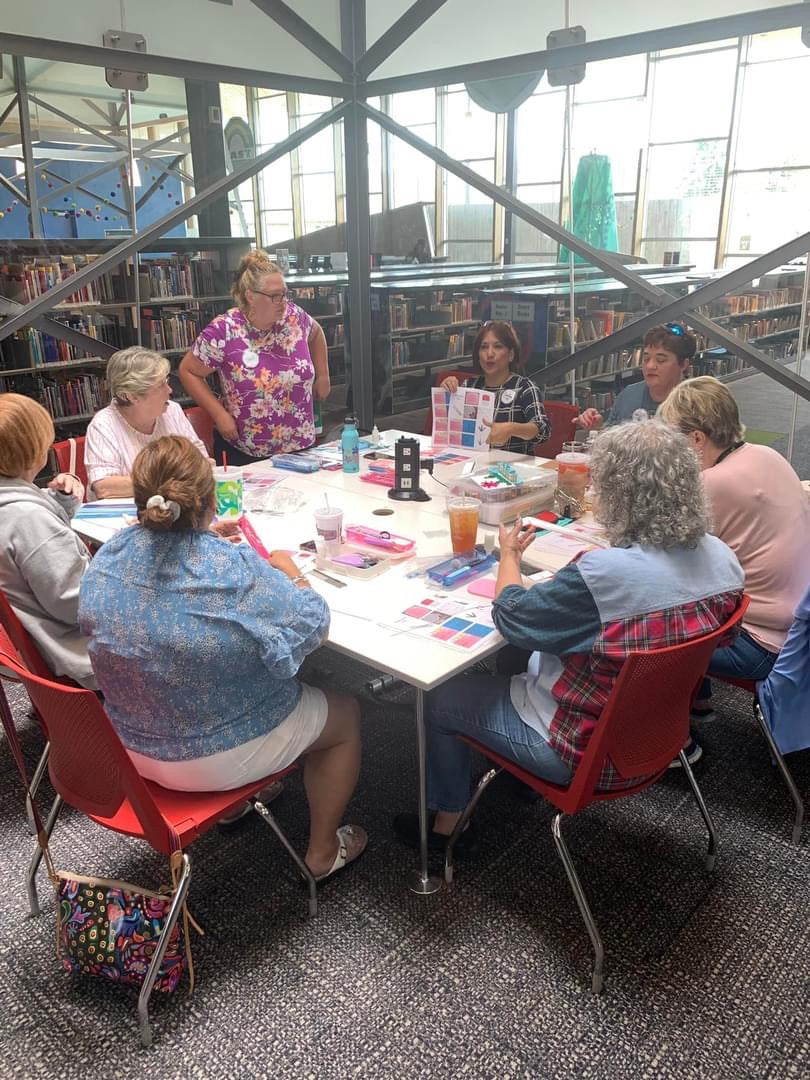Want to start teaching quilling classes but don’t know where to start? We’ve got you covered! Here are all the things my mom has learned throughout the years of teaching quilling.
Class Set-up
Class Type
You can start out with just a beginner level class but be prepared for students to ask about the next class as soon as they finish it. Depending on your availability, it would be best to offer 3-6 classes. 1 or 2 different classes for beginners, intermediates, and advanced quillers. That way people can choose which beginner class to take, or take both beginner classes if they don’t feel ready to go to the next level. There are also different types of classes. For example, you can offer two beginner classes; one for basic shapes and an on-edge class. For more advanced classes, you could offer a class for more intricate shapes and a 3D quilling class. Just decide which classes would be required of a person before taking the more advanced ones.
Class Length
Ideal class duration is between 2 to 4 hours. For beginners, it is best to set up a 2 hour class but more advanced classes can be up to 4 hours. This gives people enough time to finish what they are working on but that way no one gets too tired.
Class sizes
The smaller the easier. Classes of 8-10 are ideal. More than that and it can be too much for one person, it also requires more material.
Location
- Libraries - Many libraries offer programs like this where you can reserve a room which can be free or at least more budget friendly.
- Arts Council - This is a government or private non-profit organization dedicated to promoting the arts. If this is provided in your area you could contact them to organize quilling events and classes.
- Churches - This can also be a great place to reserve a room if available that is low budget.
- Art workshops - This will require a fee but it will probably provide a better schedule for several ongoing classes and provide an artsy environment.
Materials
You will need to obtain all the materials for your classes depending on your class sizes and projects. This means quilling paper, slotted tools, glue bottles and glue, perhaps rulers, scissors, and more. This can get pricy but some government funded programs (like the locations mentioned above) may be able assist in acquiring materials. If you can’t find a local program that can help with this or you would like to be able to keep the materials to teach in various places, it is definitely an investment but you can expect to make your money back in just a couple of classes.
Pricing
This will greatly depend on location, class length and many other variables. We are located in Oklahoma City and a class of 3 hours is reasonably priced at $46.
Advertising classes
Social media is always a great start to getting the word out for you classes, especially if you already have a following. Many of the locations mentioned above will also advertise your classes for you. It a good idea to keep an eye out for any local events such as art festivals and exhibitions as well.
Tips
Pick a Project
Many classes just teach the basic shapes and send you home to figure out what to make with them. Boring! People want to learn by creating and be able to take a finished project home. If you are having trouble finding projects for a specific length of time and level, check out our templates here. These are the same ones my mom uses for her classes and their times are based on how long her students take to complete them. Our instructions are laid out like the one below.

The instructions are made so that she can focus on teaching how to make the shapes and everyone can move at their own pace creating and assembling the final project. She puts the instructions for all of her classes in a binder and gives one to each student. This helps her keep all her classes organized and she can take the same 8-10 binders to each class.

Practice with Friends
It is a good idea to practice a class with a group of people you are comfortable with beforehand so that you can find any issues if there are any and determine if the time you planned for the class is reasonable. That way, you can avoid an embarrassing event due to lack of preparation in front of people who have paid for the class.
Make Material Easily Accessible
Before students can get started they will need to gather all the paper and tools they will need for the project. If everyone has to do this one by one, it can eat up a lot of time. Having a basic tool kit for each student keeps things organized and ensures everyone gets one of each tool. My mom stores a slotted tool (manual and electric), tweezers, glue bottle, small scissors, curling coach, embossing tool with rubber tip, pencil, straight pins, and sharpie in a plastic pencil box and sets them on a separate table than the one they will be working on. On this table she also lays out all the paper so that the students can pick the colors they want to use without having to form a line. This saves everyone time and keeps their work table clear of materials they won’t be using.


Transporting materials
There are quite a lot of things you need to transport to and from classes which can be hassle. Our value box of paper made it easy for my mom to be able to transport all the paper neatly and she found another box to put all the student kits plus any other tools that she may need. This means she only has to worry about two boxes going to and from classes.



If you like this system and would like your own box with 50 bags of quilling paper and organizer, click here. Remember to have fun and hope this helps. Happy quilling!

